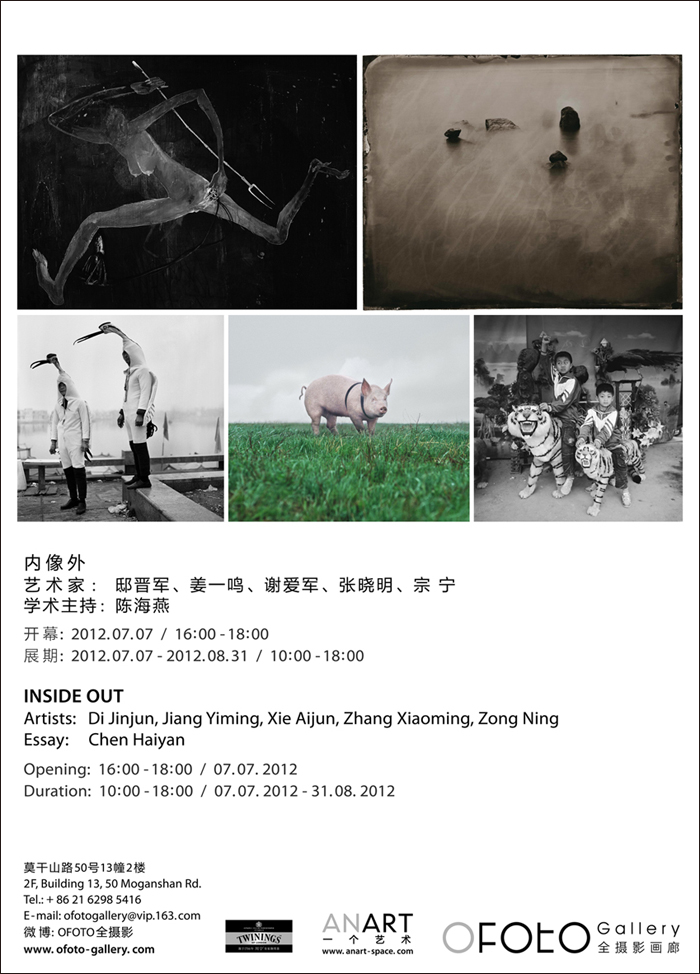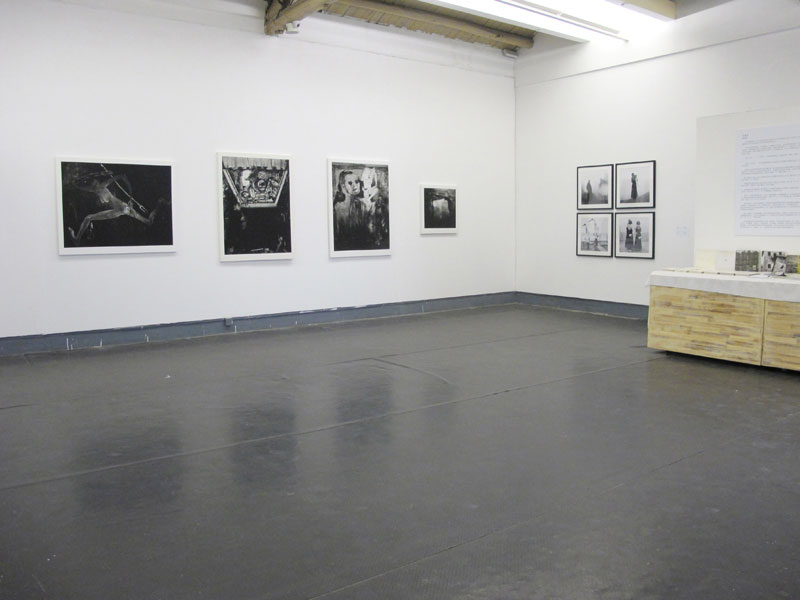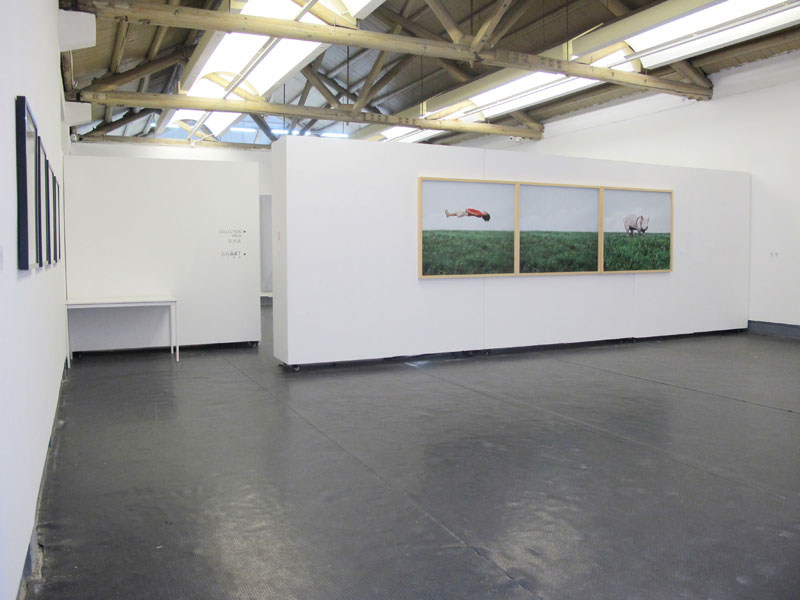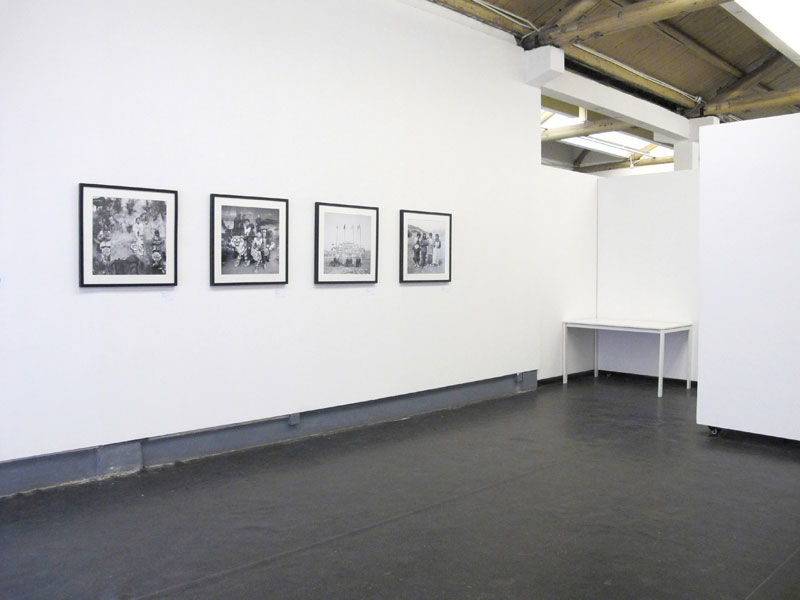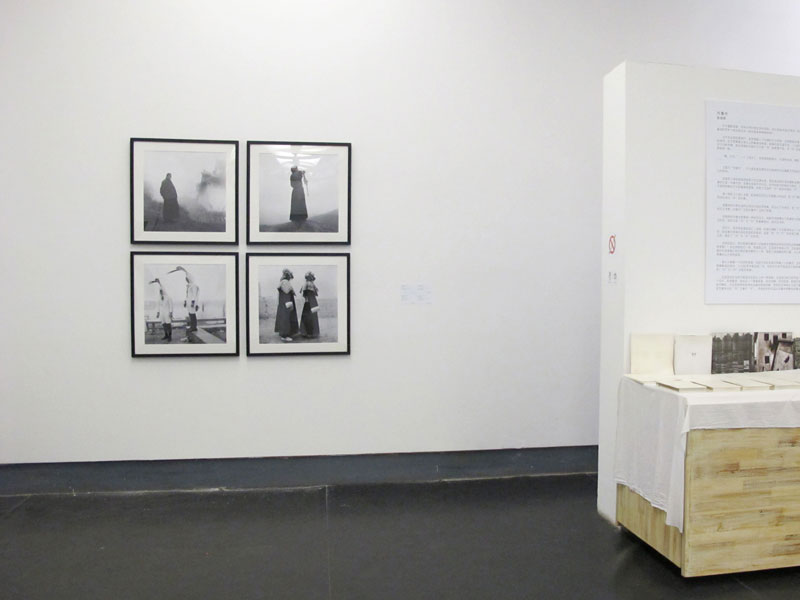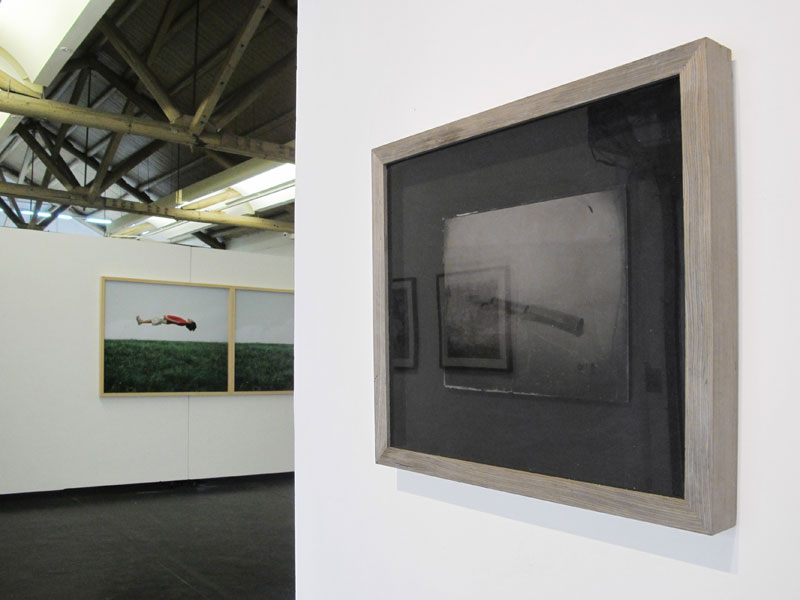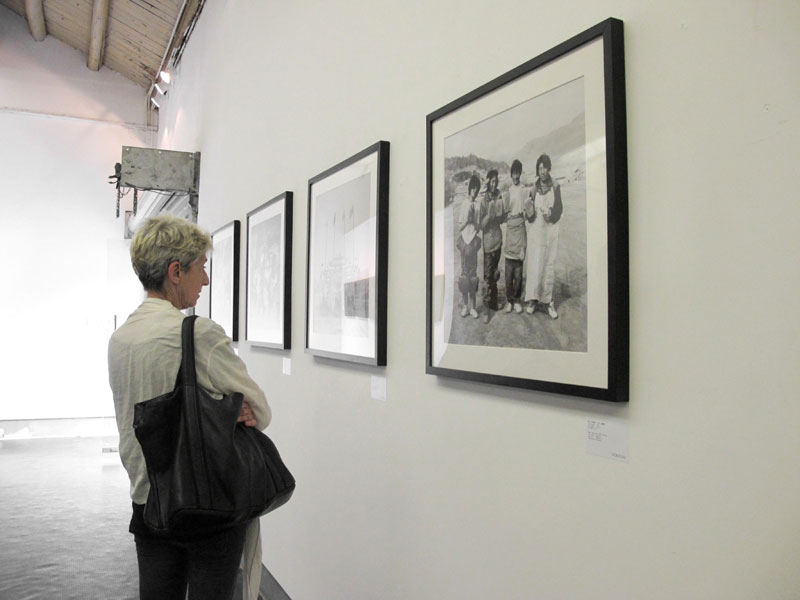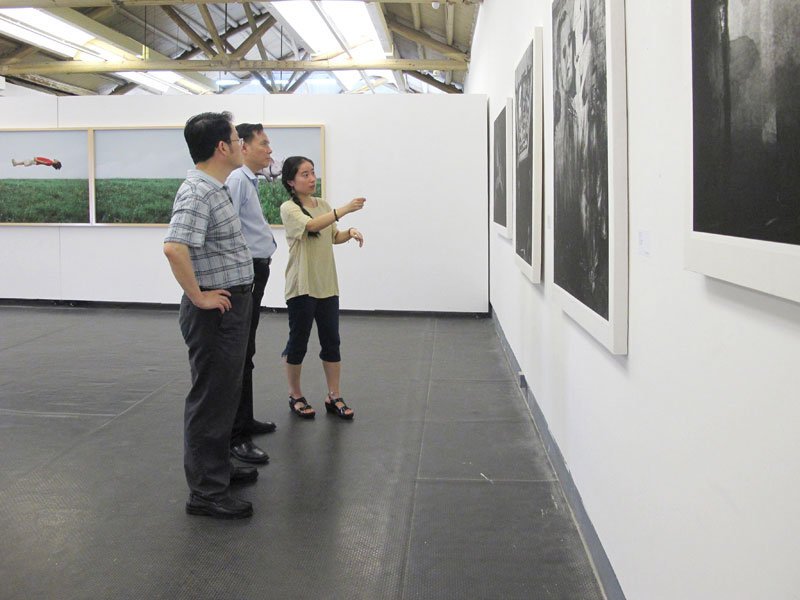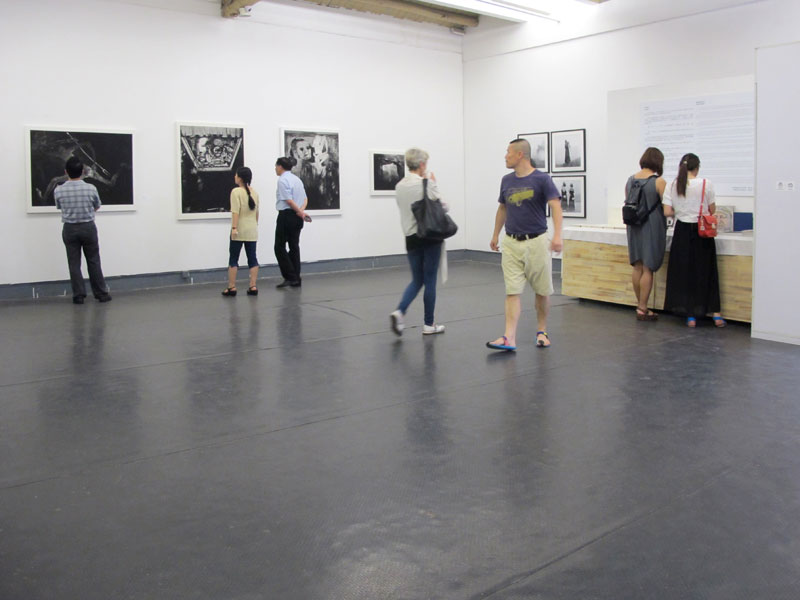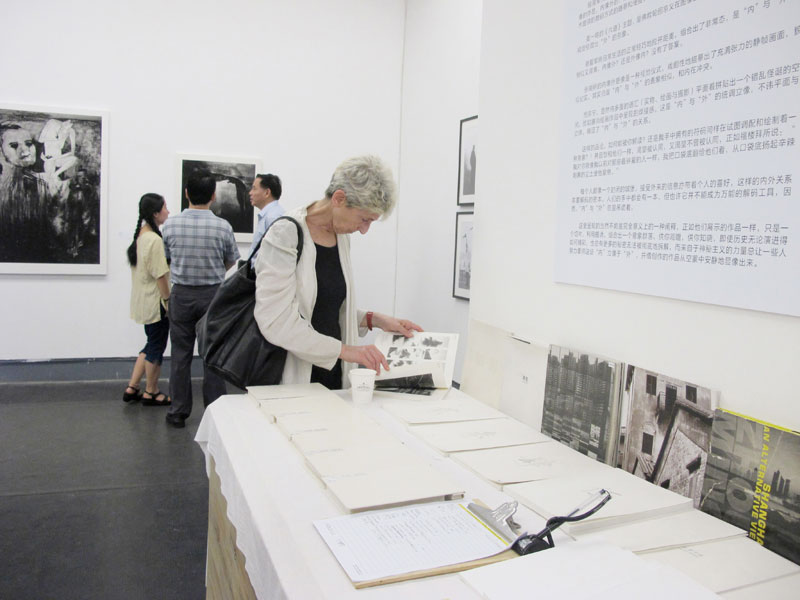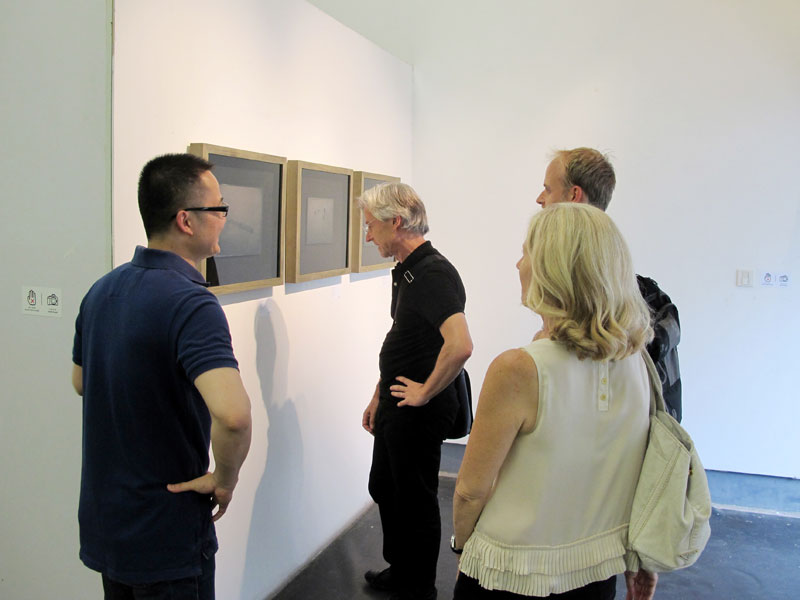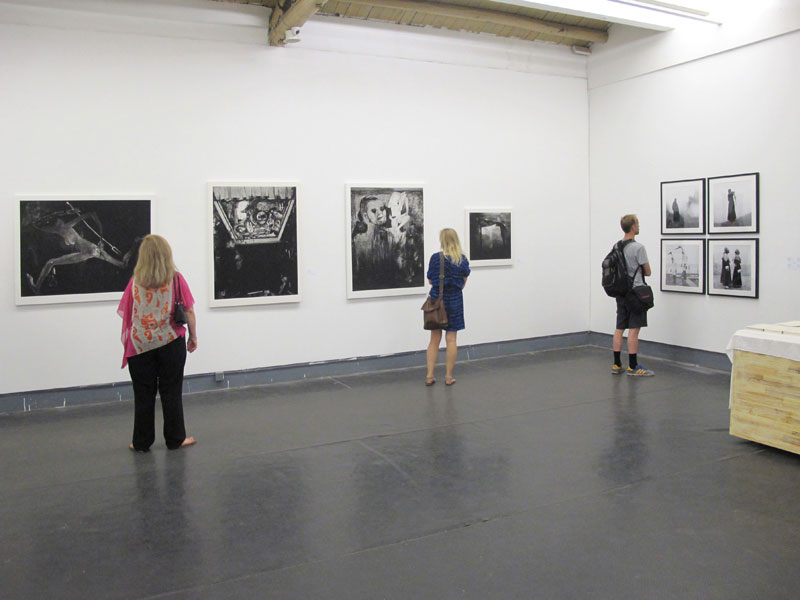Inside Out
by Chen Haiyan
Is it possible to write a good critical article about a group photography exhibition, with only words at hand? Can I, perhaps, find something common among all the highly individual artists in this exhibition?
When confronted with such questions, I started to look at the external representations of “inside images”, which don’t have any clear subject or true interpretation. The answer to my questions in the opening paragraph can always be “yes” or “no”, but we shall not neglect endless possibilities between these two endpoints. So the essence of these questions is: the “inside” wants to be “out”, and they are both confused.
According to “Shuo Wen” (Explaining and Analyzing Characters), one of the earliest Chinese dictionaries, the Chinese character “Xiang” (image) originally means resemblance, and now can also mean imitation, copying, following, forming images, etc.
The title “INSIDE OUT” is my personal attempts to unify the five photographers’ works for this exhibition.
Di Jinjun insists on using the originals of the very ancient wet plate collodion process, to create external representations of “inside”, which would mean that he has to be confined to strict timing, limited space and complicating techniques to discard the overflow of more easy and convenient digital photography.
The subject of Jiang Yiming’s works, “Six Ways”, is a visual self-narration of Buddhist transmigration.
Xie Aijun’s photos depict our daily life in an original and unconventional way. In his works, “inside” and “outside” seem to be very similar, yet vastly differently. No one can tell the true nature of such representations.
Zhang Xiaoming’s works can be considered a visual ceremony. Filled with tension, his highly dramatic photos seem documentary in nature. But they, in fact, represent the similarities and conflicts between “inside” and “outside”.
Zong Ning’s works combine a variety of visual languages (object, painting and photograph) in a 2D way, creating a magical and enigmatic space, similar to the “welding effect” in Paul Cézanne’s paintings. His works harmonizes “inside” and “outside” and “two-dimension” and “three-dimension”, blurring the boundary between “inside” and “outside”.
I am wondering what my readers would think of my interpretation above. Is it possible that I have been trying to create some sort of images with my words? And, is it possible that, similar to the artists in the show, I yearn for recognition and loathe it at the same time? As Gustave Flaubert said: “I treat you like those who I loved. I turn the pocket inside out and the pungent dust rising from the pocket bottom suffocates him.”
Everyone is a closed book, accepting information that he or she wants. Thus, for each individual, we need a decoding book to understand the relationship of “inside” and “outside”. And since no one’s decoding book is the same, there has always been a paradoxical relationship between “inside” and “outside”.
This article is by no means a complete interpretation of all the works in this exhibition, as the exhibits here are only a selected part of the artists’ creations. Similarly, my article presents only a fraction of my mind. Whatever dramatically happened in the history, there would always be secrets un-deciphered. Nevertheless, mysticism urges people attempt to reveal the “inside” “outside” and by the art creations it appears gracefully from the mystery.
Translation: Fan Chen
Thanks to: Huang Yi
翻 译:范 晨
感 谢:黄 一
by Chen Haiyan
Is it possible to write a good critical article about a group photography exhibition, with only words at hand? Can I, perhaps, find something common among all the highly individual artists in this exhibition?
When confronted with such questions, I started to look at the external representations of “inside images”, which don’t have any clear subject or true interpretation. The answer to my questions in the opening paragraph can always be “yes” or “no”, but we shall not neglect endless possibilities between these two endpoints. So the essence of these questions is: the “inside” wants to be “out”, and they are both confused.
According to “Shuo Wen” (Explaining and Analyzing Characters), one of the earliest Chinese dictionaries, the Chinese character “Xiang” (image) originally means resemblance, and now can also mean imitation, copying, following, forming images, etc.
The title “INSIDE OUT” is my personal attempts to unify the five photographers’ works for this exhibition.
Di Jinjun insists on using the originals of the very ancient wet plate collodion process, to create external representations of “inside”, which would mean that he has to be confined to strict timing, limited space and complicating techniques to discard the overflow of more easy and convenient digital photography.
The subject of Jiang Yiming’s works, “Six Ways”, is a visual self-narration of Buddhist transmigration.
Xie Aijun’s photos depict our daily life in an original and unconventional way. In his works, “inside” and “outside” seem to be very similar, yet vastly differently. No one can tell the true nature of such representations.
Zhang Xiaoming’s works can be considered a visual ceremony. Filled with tension, his highly dramatic photos seem documentary in nature. But they, in fact, represent the similarities and conflicts between “inside” and “outside”.
Zong Ning’s works combine a variety of visual languages (object, painting and photograph) in a 2D way, creating a magical and enigmatic space, similar to the “welding effect” in Paul Cézanne’s paintings. His works harmonizes “inside” and “outside” and “two-dimension” and “three-dimension”, blurring the boundary between “inside” and “outside”.
I am wondering what my readers would think of my interpretation above. Is it possible that I have been trying to create some sort of images with my words? And, is it possible that, similar to the artists in the show, I yearn for recognition and loathe it at the same time? As Gustave Flaubert said: “I treat you like those who I loved. I turn the pocket inside out and the pungent dust rising from the pocket bottom suffocates him.”
Everyone is a closed book, accepting information that he or she wants. Thus, for each individual, we need a decoding book to understand the relationship of “inside” and “outside”. And since no one’s decoding book is the same, there has always been a paradoxical relationship between “inside” and “outside”.
This article is by no means a complete interpretation of all the works in this exhibition, as the exhibits here are only a selected part of the artists’ creations. Similarly, my article presents only a fraction of my mind. Whatever dramatically happened in the history, there would always be secrets un-deciphered. Nevertheless, mysticism urges people attempt to reveal the “inside” “outside” and by the art creations it appears gracefully from the mystery.
Translation: Fan Chen
Thanks to: Huang Yi
翻 译:范 晨
感 谢:黄 一
